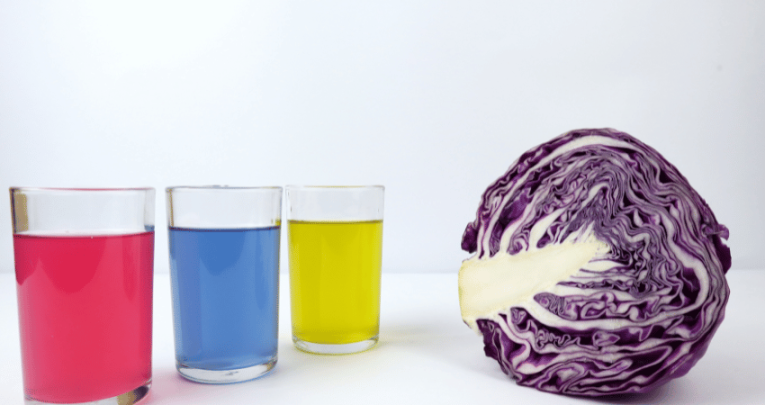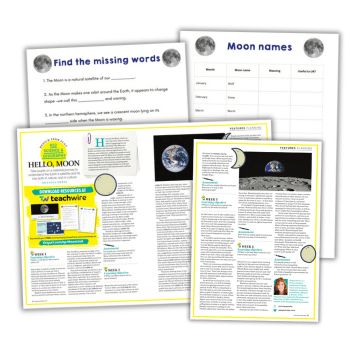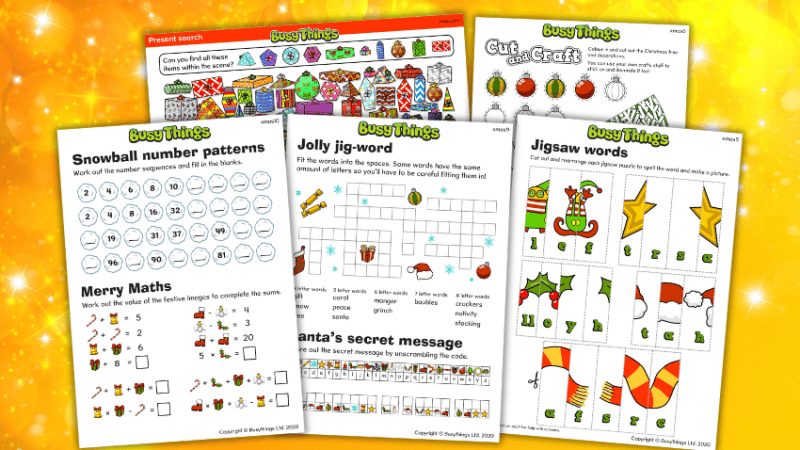Acid and alkali reaction – Easy experiment using household items

Use regular household items to investigate acids and alkalis through a rainbow of colours…

- by Leonie Briggs
- Science teacher, CREST assessor and director of Amazelab Visit website

In this lesson, we’ll learn about acid and alkali reactions using the colours of the rainbow. I put together this activity because I wanted a real emphasis on memorable, hands-on learning.
Acids and alkalis are a key concept in secondary science, so building a strong foundation early on in primary is essential. Practical activities like this one allow us to tackle tricky subjects early on in a colourful, fun and creative way.
What you’ll need
- Sieve, pan, bowl, jug, chopping board
- Hob, water
- Knife, spoon
- Three small containers
- Red cabbage
- Lemon juice
- Baking soda
- Washing powder
Acid and alkali reaction experiment
Carefully chop two large leaves of red cabbage into small pieces using a knife and a chopping board. Place the chopped cabbage into a pan, cover with water, and bring to a boil. Allow it to simmer for 10 minutes, keeping a close eye on it. Depending on the age of the learners, you might want to do this part in advance.
Drain the cabbage through a sieve, making sure to collect the water in a bowl. The cabbage will have dyed this water purple – this will become your indicator. Red cabbage contains anthocyanins, which change colour when they come into contact with acids or alkalis. Set the indicator aside and wait for it to cool, then pour it into a jug.
Next steps
While the indicator cools, set up your three small containers. Add a small amount of lemon juice to one container. In another container, mix a spoonful of baking soda with a spoonful of fresh water (not your indicator solution). In your final container, combine a spoonful of washing powder with a spoonful of fresh water. Stir each mixture gently to make sure everything dissolves.
Pour a small amount of indicator into each container. Watch as each of the household substances changes colour! You will notice that when the indicator is added to the lemon juice, the solution turns red, which indicates an acid. Washing powder is an alkali, so it turns green when the indicator is added. Baking soda turns blue, because it’s a stronger alkali. Remember: acidic solutions have a pH of less than 7, and alkaline solutions have a pH above 7.
Now it’s time to take this experiment further and investigate the pH scale. What other indicators are available? What are they used for and how do they work? Choose a range of household substances to test. Have fun with some scientific magic, using the indicator to change their colour and deciding if they are acidic or alkaline.
Leonie Briggs is a science teacher, STEAM lead, STEM ambassador, CREST assessor and director of Amazelab. Her book, Make Your Own Rainbow: A Colourful Approach to All Things STEAM (£19.99, Crown House Publishing) is out now.










